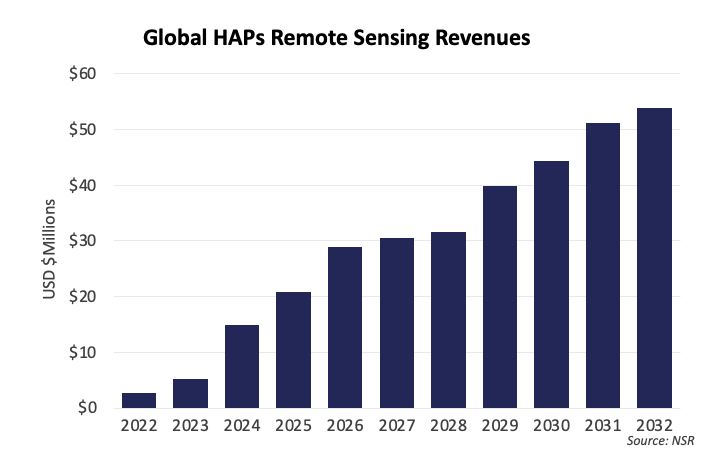Transforming ISR through High-Altitude Pseudo-Satellites (HAPs)
As we journey into an era of rapidly advancing technology, the future of Intelligence, Surveillance, and Reconnaissance (ISR) lies in exploring novel approaches that can provide greater accuracy, extensive coverage, and real-time data. For applications such as climate change (i.e., disaster management (i.e., fire, floods, earthquakes, landslides, tsunamis, etc.), and reconnaissance (i.e., battlefield coverage, front-lines monitoring, communication etc.) High-Altitude Pseudo-Satellites (HAPs) emerge as a compelling addition providing transformative solutions for ISR and remote sensing challenges. Their positional advantages promise a marked enhancement in the precision and speed of remote sensing and ISR operations.
The deployment of HAPs for ISR operations has been hampered by several issues, most notably low TRL related to manufacturing and testing robust vehicles with capability to carry higher resolution remote sensing payload and integrating the architecture with existing systems such as ground based radar, satellite bases ISR. Because the technology and ability to smoothly integrate these platforms into current ISR systems has not yet evolved, widespread deployment of HAPs remains limited. However, this brings a question to front-lines: If HAPs can potentially be swiftly deployed, what sort of unprecedented opportunity does that represent for ISR operations?
NSR’s High Altitude Platforms, 5th Edition - NSR forecasts HAPs will generate $324M in cumulative revenues over 2022-2032 period through deployment of in-service units for remote sensing. HAPs potentially present an opportunity to provide persistent surveillance over a specific area for an extended period, which can be an advantage in terms of revisiting larger zones with higher predictability and accuracy. This could potentially be obtained through deployment of Airships and Pseudo-satellites rapidly, and generate an estimated 48%, and 36% of the cumulative remote sensing revenues respectively for each type of unit. While deployment of Balloons for remote sensing needs where real-time data and constant monitoring are vital will generate 16% of the revenues.
Complementing Strategic Defense Capabilities
The potential applications of HAPs in the strategic and defense context are vast from border security to rapid surveillance deployment needs. In maritime surveillance, for example, HAPs can improve the identification of vessels and offer superior surveillance coverage. Their ability to serve as an intermediate real-time reconnaissance tool to vessels due to the relativity faster deployment times could potentially present synergies instead of reliance on other satellite EO sensors. HAPs as a reconfigurable platform potentially represent a payload hosting opportunity for SIGINT receivers and radars. The use of HD infrared video in HAPs enables the detection of moving vehicles within a wide radius, providing the ability to distinguish moving targets from static terrain, which can significantly enhance ground-based ISR operations. The adoption of HAPs in remote sensing and ISR operations can usher in a transformative change, with their ability to potentially provide continuous coverage and host flexible payloads, HAPs offer a sustainable and adaptable solution for enhancing ISR capabilities. For strategic decision-makers in the military, navy, and air force, embracing the potential of HAPs could redefine the boundaries of ISR operations, creating a more secure and informed future.
The Bottom Line
By incorporating HAPs into remote sensing and ISR operations, we could see the beginning of a paradigm change. It potentially represents a long-term solution for boosting ISR capabilities due to their capability for continuous coverage, variable payload hosting, and adaptability. Embracing the potential of HAPs could redraw the bounds of ISR activities, enabling a more secure and informed future for military, navy, and air force strategic decision-makers. However, the adoption process is not without its challenges. It is critical that manufacturers make progress beyond testing cycles to improve TRLs, and satellite sector dispels concerns about the operational consistency, and service integration of HAPs. The path forward requires a strong attention on industry demands, dangers, and potential rewards. Finally, the most beneficial solution will most likely be one that provides adaptability, broad-scale application, and resilience to change.
Author

